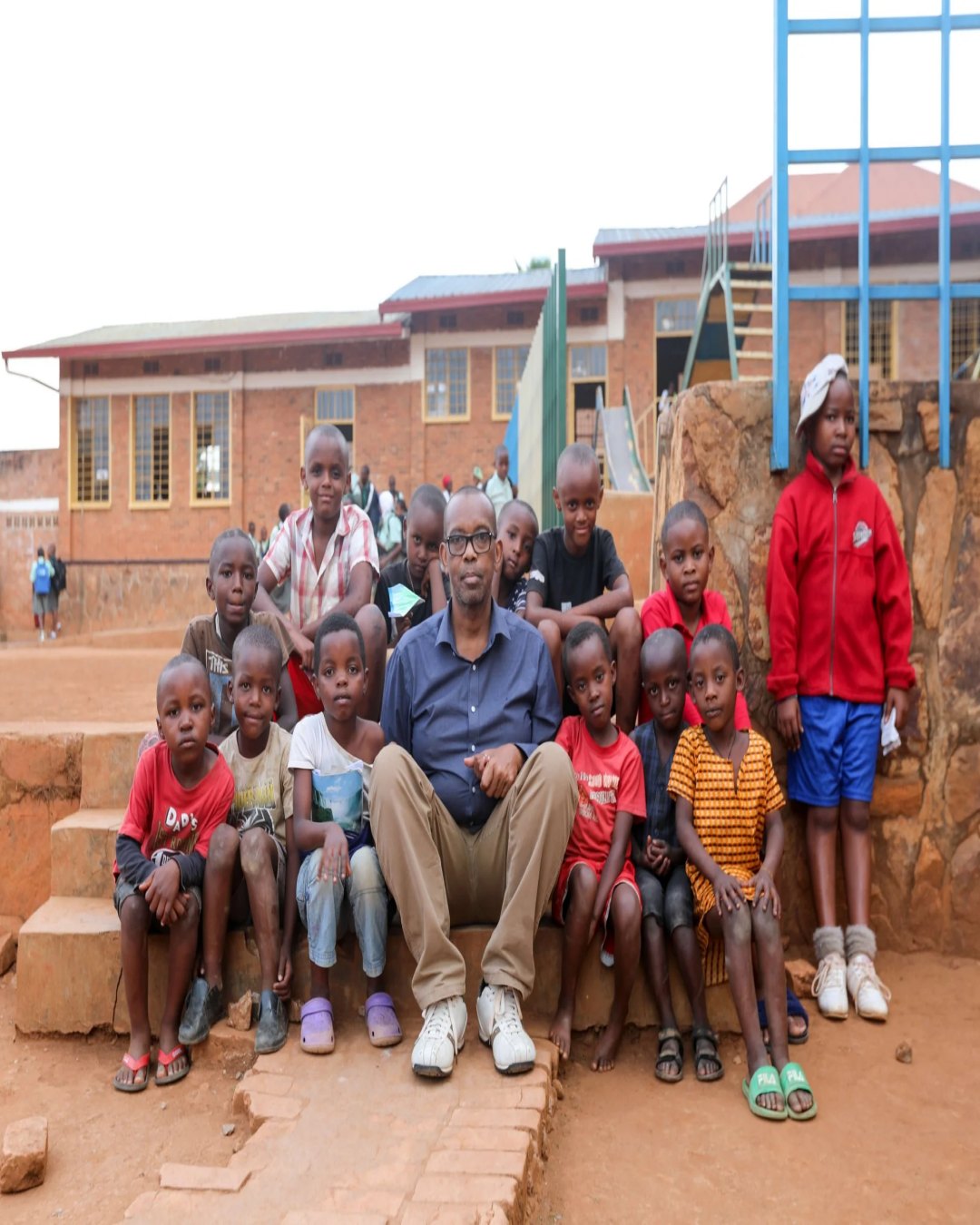The Orphanage That Became a Fortress of Humanity
In times of peace, an orphanage is a place of refuge. It is where the most vulnerable children find shelter, nourishment, and love. But in Rwanda, in April 1994, an orphanage became something far greater. It became a fortress of conscience, a fragile barrier between life and death. At the center of that story stood one man:
Damas Gisimba.
Damas had not chosen this path. In his twenties, he had inherited the orphanage from his father, who on his deathbed begged him not to abandon the children. Though he carried dreams of another life, he promised, and he kept that promise. By 1994, he had been running the orphanage for several years. He was newly married. He had a child of his own. But the responsibility for dozens of orphans — many of them Tutsi — was already his. And when the genocide began, so too did his test.

The news of the president’s assassination brought panic and gunfire. In Kigali, the air itself became charged with fear. Damas’s instinct was not escape but return — return to the children who depended on him. Sixty-five orphans were under his roof that night. By morning, more were arriving, terrified neighbors fleeing from the machetes and rifles of former friends. Damas knew the cost of sheltering them. He knew that harboring Tutsis meant certain death if discovered. But he could not close the door. “How could I?” he would later recall. “They were human beings. They had nowhere else to go.”

The trickle became a flood. First a hundred. Then two. Eventually four hundred people were packed into the orphanage, a building with no fence, no defenses, only a line of trees. They were squeezed together, shoulder to shoulder, starving, terrified, waiting for death. Young boys were hidden in the ceiling, because the militias considered them future enemies and hunted them with special fury. Babies learned to whisper the words:
“Don’t kill me, I am not a Tutsi.”

Each day, killers came to the door. They wore camouflage, carried rifles, and demanded blood. Damas faced them with empty hands and trembling courage. He bribed them with sacks of beans, corn, biscuits, and porridge, food meant for the children. He gave away nearly everything to hold the violence at bay. But generosity could not outpace hunger, and soon the supply dwindled. Word spread: “If you want food, threaten Damas.” More militias came. More food disappeared. Inside, the children grew thinner and weaker.

The greatest crisis was water. The government cut the supply, and hundreds of bodies pressed together in suffocating heat. A hundred liters would vanish in a single minute. When the last jug was emptied, despair pressed in. It was then that a car appeared, marked with the emblem of the Adventist Church. From it stepped
Carl Wilkens, the only American to remain in Rwanda during the genocide. He brought milk. He brought water. He brought the impossible — hope. Week after week he returned, braving gunfire and roadblocks. “I never knew how he did it,” Damas said later. “But he kept us alive.”

Still, horror found its way inside. One night, a group of fifteen killers entered the orphanage. They dragged six young men from the ceiling and beat them with wood studded with nails. Their screams filled the night. Damas, his arm fractured by a rifle butt, could do nothing but listen. The young men were tortured, then taken to the bushes. Not one betrayed the others. Their silence saved hundreds. Their sacrifice became part of the orphanage’s walls, a testament to loyalty and love stronger than pain. After the genocide, Damas built a memorial to honor them.

As rumors spread, the danger to Damas himself grew unbearable. The militias called him a collaborator. A death sentence was drafted against his name. Then came the summons: his name broadcast over the radio, ordering him to report to the station. He believed it was a trap, yet he went. There, trembling before the microphone, he denied the accusations. “If I was hiding anyone,” he said calmly, “would I have come here? I have only children — just babies.” To his astonishment, the broadcaster declared over the airwaves: “Damas Gisimba is no longer a suspect.” The militia threat receded, at least for a time.
Through those hundred days, Damas lost much: staff members murdered, children scarred for life, food and water reduced to dust. But he never lost his humanity. Even as death circled, he walked to the nearby pits where bodies were discarded, listening for the faintest sound of breath. If someone was alive, he carried them back to the orphanage. In those days, he said, his emotions disappeared. He was numb, ready for death, yet still he chose life — again and again, for others.
When the genocide ended, Rwanda lay shattered. A million lives were gone. But in the orphanage, four hundred had survived. They owed their lives to one man’s refusal to close the door, one man’s belief that compassion outweighed fear.
Today, Rwanda speaks of reconciliation, of rebuilding. Streets are clean. The economy is growing. Tourists walk through Kigali and wonder how such horror could have happened here. But for Damas, and for the children he sheltered, the memories are never far away. The orphanage stands as both a scar and a beacon: a reminder of what hate can destroy, and what courage can preserve.
History will remember the genocide for its cruelty. But it must also remember the rescuers — those like Damas Gisimba, who in humanity’s darkest hours refused to abandon light.
